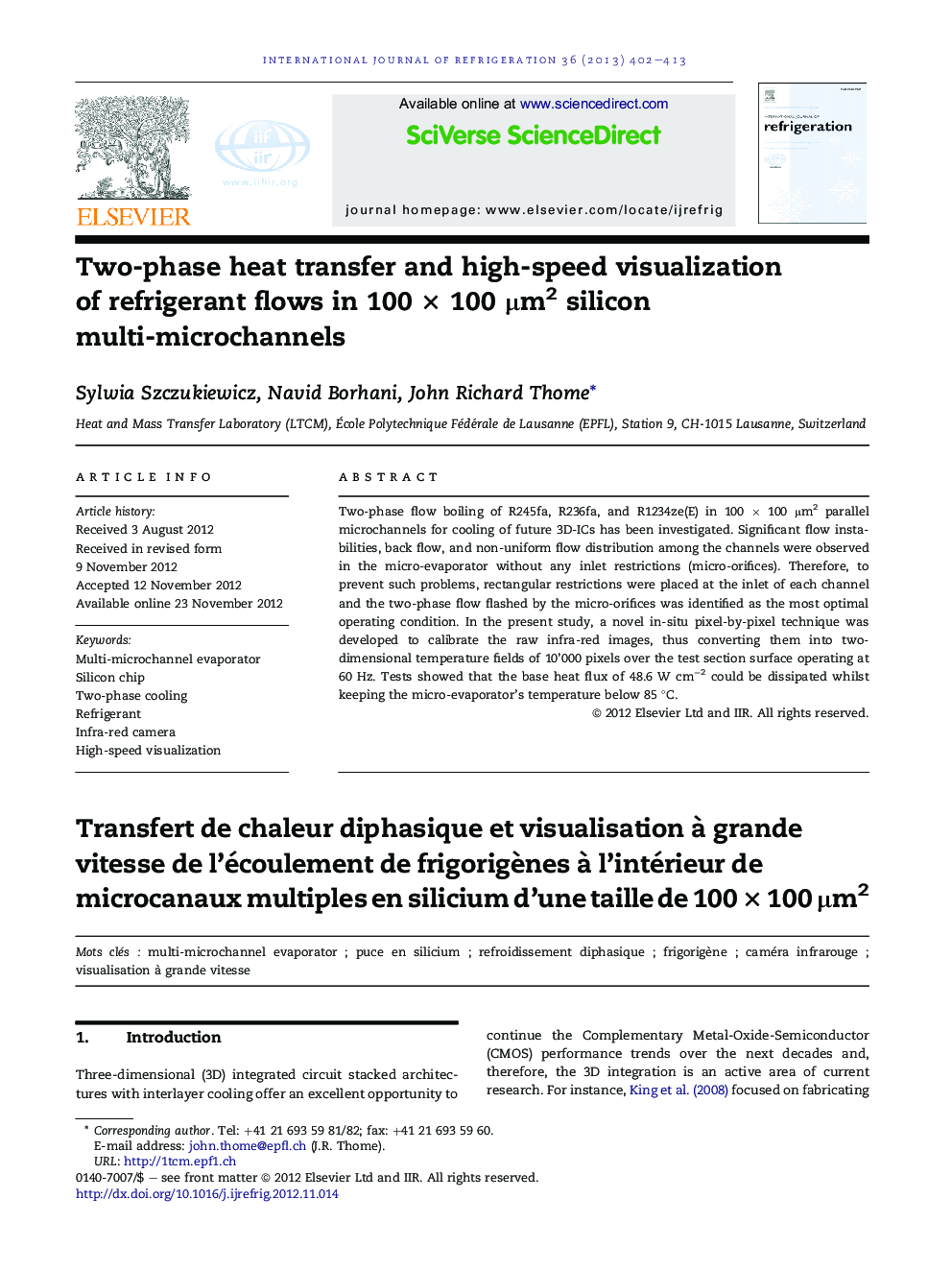| Article ID | Journal | Published Year | Pages | File Type |
|---|---|---|---|---|
| 787045 | International Journal of Refrigeration | 2013 | 12 Pages |
Two-phase flow boiling of R245fa, R236fa, and R1234ze(E) in 100 × 100 μm2 parallel microchannels for cooling of future 3D-ICs has been investigated. Significant flow instabilities, back flow, and non-uniform flow distribution among the channels were observed in the micro-evaporator without any inlet restrictions (micro-orifices). Therefore, to prevent such problems, rectangular restrictions were placed at the inlet of each channel and the two-phase flow flashed by the micro-orifices was identified as the most optimal operating condition. In the present study, a novel in-situ pixel-by-pixel technique was developed to calibrate the raw infra-red images, thus converting them into two-dimensional temperature fields of 10’000 pixels over the test section surface operating at 60 Hz. Tests showed that the base heat flux of 48.6 W cm−2 could be dissipated whilst keeping the micro-evaporator’s temperature below 85 °C.
► Inlet micro-orifices prevented flow instability, back flow, and flow maldistribution. ► Eight different operating regimes were distinguished. ► The flashing two-phase flow without back flow operating regime is preferred. ► New in-situ pixel by pixel calibration technique of an IR camera was developed. ► The given temperature limit of 85 °C for CPUs is respected.
